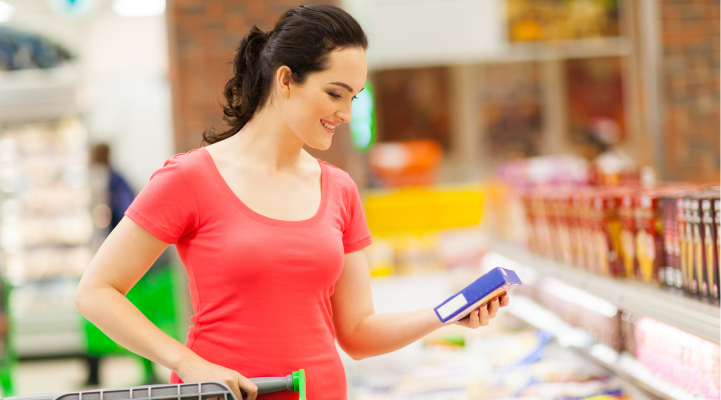
The benefits of frozen food are revolutionary, even to this day: foods keep for longer, and cooking has changed because frozen food is seasonally independent and can be prepared quickly. Frozen food went on sale for the first time in Britain on May 10, 1937. The UK’s first frozen food product was asparagus made by Smedley’s of Wisbech*. In the USA, former President Ronald Reagan introduced National Frozen Food Day in 1984. Click here to read his proclamation.
10 top tips on dealing with frozen food
- When buying frozen food, leave it until the end of your shop to put it in your trolley, so that it doesn’t start to thaw. On arriving home, either cook it straight away or put it in the freezer as soon as possible.
- Ideally, transport frozen food from the supermarket to your home using a cool box. Padded cool bags, fleece jackets or fleece blankets also work well. Ensure that the goods are tightly wrapped. The thin insulation bags, which can be purchased at the checkout, are less suitable.
- Please take note of the manufacturer’s cooking instructions for the frozen food to ensure that it retains its best quality.
- Leave the food in its packaging while it defrosts to prevent cross-contamination (e.g. to prevent chicken juices from coming into contact with other foods) and to stop the food from drying out.
- Most frozen food can be cooked straight from the freezer, without defrosting. If defrosting is required, always follow the manufacturer’s instructions.
- Frozen vegetables are really healthy! They are immediately blast frozen after harvesting when they are full of vitamins and nutrients, and they retain these for a long time. This is where fresh vegetables often suffer: lengthy transportation routes often lead to a loss of vitamins and nutrients. Frozen vegetables keep hold of these valuable constituents.

- Only remove the amount of frozen food from the freezer that you are actually going to eat. When buying and freezing food, ensure that it can be easily split into portions, to make defrosting simpler later on.
- If you have any leftovers from a cooked meal made with frozen food, they can be frozen and defrosted at a later date. Ensure that you heat the food through thoroughly before eating.
- Defrost frozen food slowly in the refrigerator. Not only does the fridge ‘absorb’ the coldness from the frozen food saving energy, but also the low temperature slows the formation of bacteria. Remember: defrosting food in this way takes longer than defrosting at room temperature!
- When freezing food, ensure that packaging is sealed tightly around it. If you have bought frozen food, ensure that the packaging is not damaged to prevent freezer burn taking place.
By the way, remember to defrost your freezer regularly (unless you have a Liebherr appliance with NoFrost technology!) as this will save you time, energy and money.
Did you like this article? Do you have any tips on dealing with frozen food? Feel free to comment below or get in touch on Facebook and Twitter!
*Source: Food For Thought by Ed Pearce